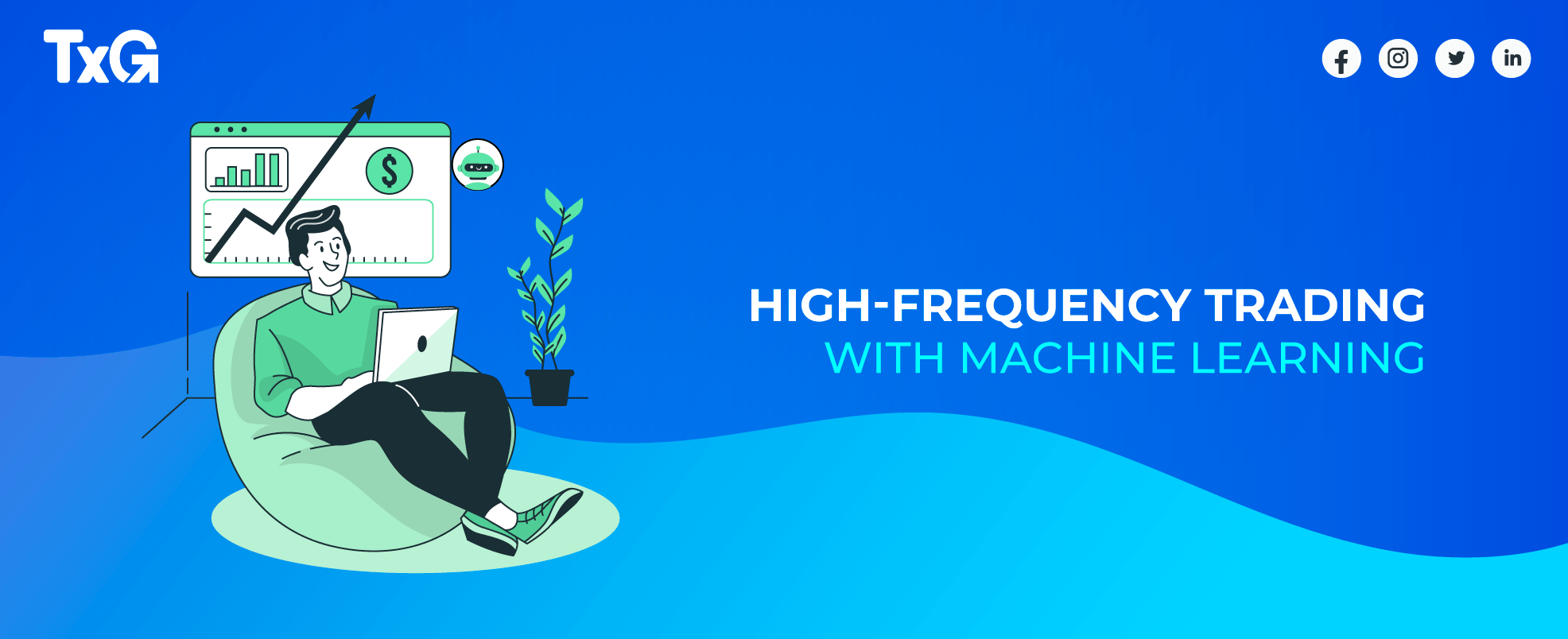High-frequency trading (HFT) has revolutionized the financial markets, enabling traders to execute thousands of trades within milliseconds. In this fast-paced environment, traditional trading strategies often fall short. Machine learning, with its ability to process vast amounts of data and make lightning-fast decisions, has become a game-changer for HFT. In this blog, we’ll explore how machine learning is transforming high-frequency trading and the strategies that traders employ to stay ahead in this hyper-competitive landscape.
Understanding High-Frequency Trading
High-frequency trading involves executing a large number of trades in very short timeframes, often holding positions for mere fractions of a second. The key components of HFT include:
- Algorithmic Trading:
Algorithms are the brains behind HFT. They analyse market data, identify patterns, and make trading decisions in microseconds.
- Market Data:
HFT relies heavily on real-time market data, including price quotes, order book information, and news feeds. This data is the lifeblood of HFT strategies.
- Low Latency:
Speed is of the essence in HFT. Traders invest heavily in cutting-edge technology to minimize latency, including colocation services and high-speed data connections.
Machine Learning in HFT
Machine learning enhances HFT by:
- Pattern Recognition:
ML models can detect subtle patterns in market data that are often imperceptible to humans. This can lead to more accurate predictions.
- Risk Management:
ML algorithms can quickly assess the risk associated with a trade and adjust positions accordingly, reducing potential losses.
- Alpha Generation:
ML models can identify alpha signals, which are trading opportunities with the potential for profit.
Common Machine Learning Strategies in HFT
- Statistical Arbitrage:
ML models analyse historical data to identify mispriced securities. When a mispricing is detected, the algorithm executes a trade to profit from the discrepancy.
- Market Making:
HFT firms often act as market makers, providing liquidity to the market. ML models help them set optimal bid-ask spreads and manage risk.
- Sentiment Analysis:
Natural language processing (NLP) models can analyse news feeds and social media sentiment to gauge market sentiment and make informed trading decisions.
Challenges in High-Frequency Trading with Machine Learning
While machine learning offers significant advantages in HFT, it also presents challenges:
- Data Quality:
ML models are only as good as the data they’re trained on. Ensuring high-quality, low-latency data is crucial.
- Overfitting:
ML models can overfit to historical data, making them less effective in real-time trading. Regular model retraining is necessary.
- Regulatory Scrutiny:
HFT is subject to intense regulatory scrutiny. Firms must ensure their ML-based strategies comply with financial regulations.
Conclusion
High-frequency trading with machine learning is a dynamic field that continues to evolve. As technology advances and data sources proliferate, the potential for innovation in HFT is boundless. However, it’s essential for traders to balance the advantages of ML with the challenges it presents, all while operating in an ultra-competitive and heavily regulated environment. As HFT continues to shape the financial markets, machine learning will remain at its forefront, driving profits and shaping the landscape of modern trading.
Disclaimer: High-frequency trading involves significant risks and may not be suitable for all investors. It’s essential to conduct thorough research and seek professional advice before engaging in HFT activities.
How can we help you?
- Algorithm Development and Optimization:
- Develop custom machine learning algorithms tailored to client’s HFT objectives.
- Optimize existing algorithms for maximum efficiency and speed.
- Implement strategies that leverage pattern recognition and alpha generation using machine learning models.
- Data Infrastructure and Low Latency Solutions:
- Build high-performance data infrastructure capable of handling real-time market data feeds.
- Provide low latency solutions, such as colocation services, to minimize execution delays.
- Ensure data quality and integrity through robust data validation and cleansing processes.
- Risk Management and Compliance:
- Develop risk management algorithms that assess trade risk in real-time and trigger risk mitigation actions.
- Implement compliance monitoring tools to ensure HFT strategies adhere to regulatory requirements.
- Offer expertise in navigating the complex landscape of financial regulations governing HFT.
- Continuous Monitoring and Support:
- Provide 24/7 monitoring and support for HFT systems to ensure smooth operation.
- Implement automated alerts and failover mechanisms to respond to system anomalies or downtime.
- Offer regular model retraining and performance analysis to adapt to changing market conditions.
By offering these services, we help our clients navigate the complexities of HFT with machine learning, enabling them to stay competitive, manage risk, and comply with regulatory standards in this high-speed trading environment.

